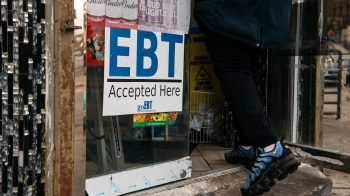
Food aid need shifts from cities to countryside

Congress is working on the farm bill, a huge piece of legislation renewed every five years. The largest part of it — 80 percent — is the Supplemental Nutrition Assistance Program, or SNAP, what we used to call food stamps. Since the late 1970s, lawmakers have placed the nutrition program into the farm package hoping to get both urban and rural support. But that thinking might be outdated: Government data show a higher percentage of people in rural areas and small towns used SNAP than the rate in cities.
Click the audio player above to hear the full story.
There’s a lot happening in the world. Through it all, Marketplace is here for you.
You rely on Marketplace to break down the world’s events and tell you how it affects you in a fact-based, approachable way. We rely on your financial support to keep making that possible.
Your donation today powers the independent journalism that you rely on. For just $5/month, you can help sustain Marketplace so we can keep reporting on the things that matter to you.


















